King Solomon Was Invented As Political Propaganda To Unite People Of Judah – Scholars Argue
Ellen Lloyd - AncientPages.com - Renowned for his wisdom and riches, King Solomon is said to have ruled Israel after King David. Mentioned in the Bible on several occasions, King Solomon is famous for being the one who built the first Jewish Temple around 957 B.C.
Mystery still surrounds King Solomon’s temple because no one knows what it looked like, and its location remains an archaeological puzzle. According to Biblical accounts, King Solomon ruled during ‘The Golden Age” of Israel and he was the richest and wisest man who ever lived.
Whatever happened to his precious possessions is unknown because his temple has never been found. Some suggest Pharaoh Shishak plundered King Solomon’s temple, but there is no solid evidence to maintain this event ever took place.
Left: King Solomon by Simeon Solomon (1840–1905). Credit: Public Domain - Right: Manasseh's Sin and Repentance; as in 2 Chronicles 33:1-13; illustration from a Bible card published by the Providence Lithograph Company. Credit: Public Domain
Much has been written about the famous king of Israel, but are the tales about the legendary King Solomon completely made up?
Many scholars have questioned King Solomon’s existence on several occasions. A leading archaeologist in Israel maintains the written story about King Solomon was pure propaganda that served to unite people Judah.
According to a theory presented by archaeologist Israel Finkelstein and historian Neil Silberman, it’s impossible that King Solomon could have lived and ruled Israel between 970–931 B.C. Based on extensive studies they conclude Israel was a weak and unorganized state at the time.
King Solomon’s “supposedly vast wealth and international power could have been centered in Jerusalem, which was then no more than a “highland village,” nor could he possibly have ruled over a large kingdom in the land of Israel, which lacked the level of literacy and urbanization necessary for such an administration.” 1
Was Solomon King Manasseh Of Judah?
Silberman and Finkelstein explain that the Biblical account of King Solomon reminds of King Manasseh of Judah who reigned at the time when the story of Solomon was written down. King Manasseh ruled Judah between 687–643 B.C. and he is mentioned in Assyrian records as a contemporary and loyal vassal of Sennacherib's son and successor, Esarhaddon.
King Manasseh had to deal with Assyrians who had destroyed much of Judah. Being a cunning and clever man who used diplomacy he managed to incorporate Judah into the Assyrian world economy.
 “The instruments of royal power—trade, building projects, and administration—that begin to emerge during the reign of Hezekiah were exercised more extensively during the reign of his son and successor Manasseh (698–642 BCE). If any historical character resembles the biblical Solomon, it is he.
“The instruments of royal power—trade, building projects, and administration—that begin to emerge during the reign of Hezekiah were exercised more extensively during the reign of his son and successor Manasseh (698–642 BCE). If any historical character resembles the biblical Solomon, it is he.
Sennacherib’s invasion resulted in far-reaching destruction, devastating Judah’s main regional centers and richest agricultural areas. By the time of Manasseh’s accession, the economy of Judah was in ruins.
The city of Jerusalem was isolated in the midst of a depopulated countryside; it had become the lonely “lodge in a cucumber field” described by the prophet Isaiah (1:8)—a huge, crowded city in the midst of an overwhelmed agricultural hinterland.” 2
King Manasseh did all he could to restore Judah to its former glory. He built new cities, improved agriculture and launched important building projects. However, King Manasseh could not accomplish any of this without the support of his people.
Silberman and Finkelstein state this is was the reason why the story of King Solomon was invented. King Solomon was used as political propaganda to unite people of Judah with the “with the goal of providing a precedent for King Manasseh’s integration of Judah into the Assyrian international economy, and the grandiose depiction of the Temple in Jerusalem is actually from the late eighth century, when Jerusalem’s authority needed shoring up in the face of an incoming flux of refugees from nearby Israel.” 1
In their book, David and Solomon: In Search of the Bible's Sacred Kings and the Roots of the Western Tradition, the researchers present compelling evidence that many famous episodes in the Biblical story of King Solomon are historically questionable and overexaggerated. This doesn’t necessarily imply that King Solomon was not a historical person, but he was simply very different from his scriptural portraits.
Written by Ellen Lloyd – AncientPages.com
Copyright © AncientPages.com All rights reserved. This material may not be published, broadcast, rewritten or redistributed in whole or part without the express written permission of AncientPages.com
Expand for references- Raanan Eichler - David and Solomon: In Search of the Bible's Sacred Kings and the Roots of the Western Tradition, by Israel Finkelstein and Neil Asher Silberman
- Israel Finkelstein, Neil Asher Silberman - David and Solomon: In Search of the Bible's Sacred Kings and the Roots of the Western Tradition
More From Ancient Pages
-
 The 5th Century BC Gela II Wreck Linked To Orichalco Cargo Salvaged In Sicily
Archaeology | Oct 8, 2024
The 5th Century BC Gela II Wreck Linked To Orichalco Cargo Salvaged In Sicily
Archaeology | Oct 8, 2024 -
 Eleanor Of Aquitaine – Mother Of King Richard The Lionheart And One Of Most Powerful Women Of Middle Ages
Featured Stories | Feb 26, 2018
Eleanor Of Aquitaine – Mother Of King Richard The Lionheart And One Of Most Powerful Women Of Middle Ages
Featured Stories | Feb 26, 2018 -
 Machu Picchu Was Built With The Royal Unit System – New Research Suggests
Archaeology | Jan 14, 2021
Machu Picchu Was Built With The Royal Unit System – New Research Suggests
Archaeology | Jan 14, 2021 -
 Denisovan Genetic Heritage Could Affect The Mental Health Of European And Asian Populations
DNA | Oct 31, 2023
Denisovan Genetic Heritage Could Affect The Mental Health Of European And Asian Populations
DNA | Oct 31, 2023 -
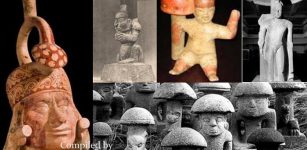 Mysterious Ancient Mushrooms In Myths And Legends: Sacred, Feared And Worshiped Among Ancient Civilizations
Featured Stories | Apr 26, 2023
Mysterious Ancient Mushrooms In Myths And Legends: Sacred, Feared And Worshiped Among Ancient Civilizations
Featured Stories | Apr 26, 2023 -
 Amazing Giant Rock Engravings Discovered In South America May Be The World’s Largest
Archaeology | Jun 5, 2024
Amazing Giant Rock Engravings Discovered In South America May Be The World’s Largest
Archaeology | Jun 5, 2024 -
 Mythical Stymphalian Birds: Terrible Winged Maidens With Birds’ Feet
Featured Stories | Feb 27, 2017
Mythical Stymphalian Birds: Terrible Winged Maidens With Birds’ Feet
Featured Stories | Feb 27, 2017 -
 Evidence Ravens Share A 30,000-Year-Old Relationship With Humans
Archaeology | Jul 14, 2023
Evidence Ravens Share A 30,000-Year-Old Relationship With Humans
Archaeology | Jul 14, 2023 -
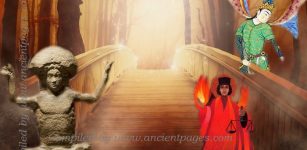 Three Judges Of Souls Await You On Chinvat Bridge – Gateway To Unknown Realms In Zoroastrian Beliefs
Featured Stories | Aug 11, 2021
Three Judges Of Souls Await You On Chinvat Bridge – Gateway To Unknown Realms In Zoroastrian Beliefs
Featured Stories | Aug 11, 2021 -
 Spectacular Find: Lost Temple Of Goddess Artemis Has Been Found On Greek Island Of Euboea
Archaeology | Sep 22, 2017
Spectacular Find: Lost Temple Of Goddess Artemis Has Been Found On Greek Island Of Euboea
Archaeology | Sep 22, 2017 -
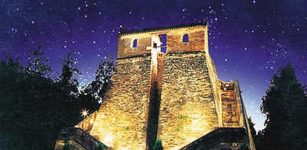 Gaocheng: China’s Oldest Observatory And Large Gnomon Installation Of The Ancients
Ancient Technology | Nov 5, 2016
Gaocheng: China’s Oldest Observatory And Large Gnomon Installation Of The Ancients
Ancient Technology | Nov 5, 2016 -
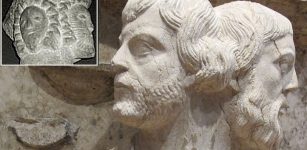 Two-Faced Great Roman God Janus – Symbol Of All Beginnings And Endings
Featured Stories | Apr 9, 2021
Two-Faced Great Roman God Janus – Symbol Of All Beginnings And Endings
Featured Stories | Apr 9, 2021 -
 Calçoene – Amazon Stonehenge And The Mysterious Amapán Megalithic Culture
Civilizations | Feb 14, 2018
Calçoene – Amazon Stonehenge And The Mysterious Amapán Megalithic Culture
Civilizations | Feb 14, 2018 -
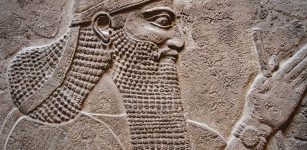 Unexpected Discovery Of 600 B.C Assyrian Palace In Shrine Destroyed By Isil Militants
Archaeology | Mar 2, 2017
Unexpected Discovery Of 600 B.C Assyrian Palace In Shrine Destroyed By Isil Militants
Archaeology | Mar 2, 2017 -
 Ancient Mammoth Ivory Carving Technology Of Master Craftsmen – Reconstructed
Archaeology | Aug 27, 2020
Ancient Mammoth Ivory Carving Technology Of Master Craftsmen – Reconstructed
Archaeology | Aug 27, 2020 -
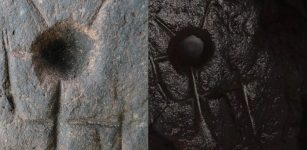 Can You Solve The Mystery Of The Nessglyph? Archaeologists Ask
Archaeology | Jan 31, 2023
Can You Solve The Mystery Of The Nessglyph? Archaeologists Ask
Archaeology | Jan 31, 2023 -
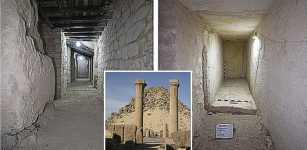 Excavation And Restoration Of New Rooms In The Pyramid Of Sahura In Abusir
Archaeology | Sep 27, 2023
Excavation And Restoration Of New Rooms In The Pyramid Of Sahura In Abusir
Archaeology | Sep 27, 2023 -
 Hundreds of Monumental ‘Kites’ Spotted in Arabian Desert
Archaeology | Sep 12, 2022
Hundreds of Monumental ‘Kites’ Spotted in Arabian Desert
Archaeology | Sep 12, 2022 -
 Orang Bunian: Mysterious Invisible Whistle People Living In Forests In Malay Folklore
Featured Stories | Jul 15, 2016
Orang Bunian: Mysterious Invisible Whistle People Living In Forests In Malay Folklore
Featured Stories | Jul 15, 2016 -
 Ancient Underwater City Of Heracleion Reveals More Archaeological Treasures
Archaeology | Jul 21, 2021
Ancient Underwater City Of Heracleion Reveals More Archaeological Treasures
Archaeology | Jul 21, 2021

